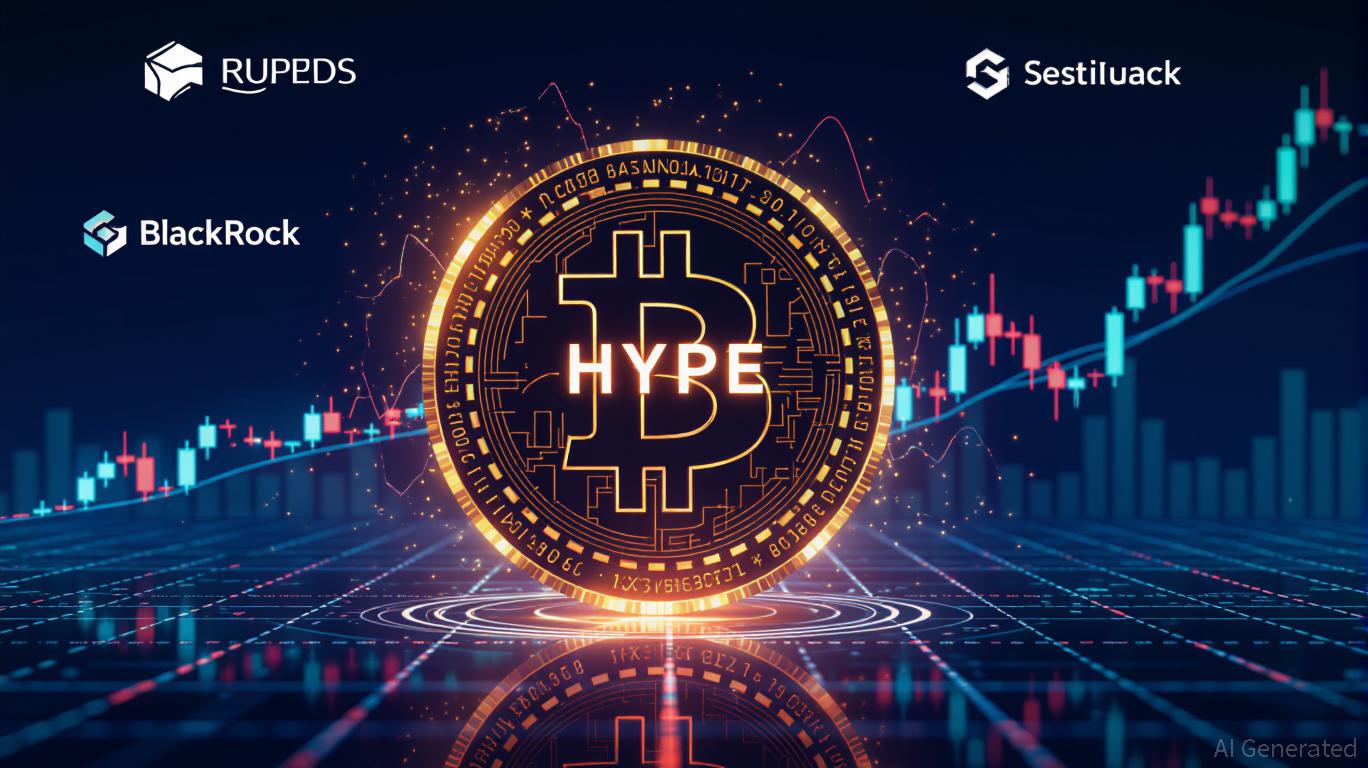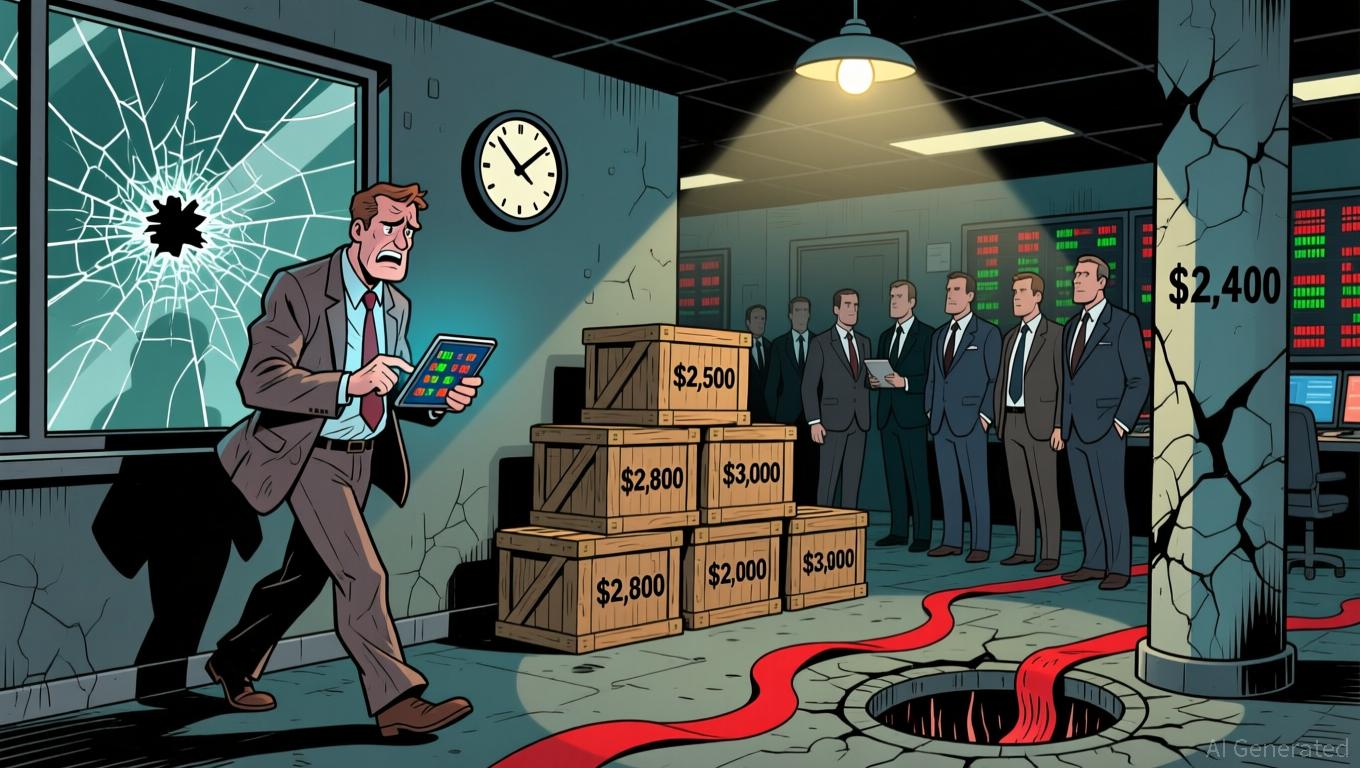HYPE Token Price Fluctuations and Institutional Attitudes in the Crypto Market: Weighing Immediate Risks Against Future Opportunities
- HYPE token's 2025 price swings ($24.51-$57.38) highlight crypto's short-term volatility driven by whale activity, token unlocks, and market jitters. - Hyperliquid's 70-80% DEX futures market dominance stems from 90% fee cuts, $47B weekly volumes, and partnerships with BlackRock/Stripe for USDH stablecoin. - Institutional adoption via 21Shares' SEC ETF proposal and $1B treasury buybacks aim to stabilize HYPE, though regulatory uncertainty remains a key risk. - Analysts project $30-$60 stabilization by 202
Short-Term Speculative Risks: A Volatile Landscape
The dramatic price movements of HYPE are influenced by a mix of global economic trends, unclear regulations, and competitive pressures. In late 2025,

Uncertainty around regulations remains a significant concern. Although Hyperliquid has adapted well to the shifting crypto environment,
Long-Term Institutional Adoption: A Path to Legitimacy
Despite these obstacles, Hyperliquid’s embrace by institutions in 2025 has set the stage for sustained expansion.
Confidence from large-scale investors has grown further through alliances with industry leaders.
The token’s economic design also helps align interests for the long haul.
Regulatory Clarity: A Double-Edged Sword
The SEC’s review of the 21Shares Hyperliquid ETF proposal is a crucial moment.
Conclusion: Navigating the Duality of HYPE
The HYPE token illustrates the two-sided nature of the crypto world: it is both a high-risk, speculative asset and a candidate for becoming a key part of institutional DeFi infrastructure. While short-term traders must contend with price instability, token unlocks, and regulatory unknowns, long-term investors could benefit from Hyperliquid’s market leadership, institutional alliances, and thoughtful tokenomics. The next several months will reveal whether the platform can maintain its pace of innovation and successfully address regulatory challenges. For those investing, the challenge is to weigh the appeal of quick profits against the patience needed to benefit from institutional growth—a balance that not only defines HYPE, but also the wider crypto landscape.
Disclaimer: The content of this article solely reflects the author's opinion and does not represent the platform in any capacity. This article is not intended to serve as a reference for making investment decisions.
You may also like
XRP News Today: Abu Dhabi’s Green Light Establishes UAE as a Pioneer in Stablecoin Development
- Ripple's RLUSD stablecoin gains Abu Dhabi regulatory approval as UAE advances digital finance leadership. - ADGM's "Accepted Fiat-Referenced Token" designation enables institutional use for lending and cross-border payments. - RLUSD's $1.2B market cap growth reflects institutional demand, backed by USD reserves and dual blockchain operations. - UAE's ADGM-DIFC regulatory synergy attracts global fintechs , with Ripple expanding partnerships across Africa and Asia. - Regulatory milestones position RLUSD to
Ethereum Updates: Ethereum Drops to $2,800, Prompting Surge in Demand for ZKP's Hardware-Based Presale
- Ethereum's price fell below $2,800, triggering $6.5M liquidations and testing critical support levels amid declining on-chain demand metrics. - Institutional players like BitMine accumulated 3.62M ETH (~$10.4B) despite the selloff, signaling long-term bullish conviction. - ZKP's hardware-driven presale gained traction with $17M in ready-to-ship Proof Pods and Miami Dolphins partnership for privacy-focused sports analytics. - Mutuum Finance's $19M DeFi presale and ZKP's auction model with $50K wallet caps

Vitalik Buterin Supports ZKsync: What This Means for Layer 2 Scaling
- Vitalik Buterin endorsed ZKsync in late 2025, highlighting its "underrated and valuable" work alongside the Atlas upgrade achieving 15,000 TPS and $0.0001 fees. - ZKsync's zero-knowledge rollups and EVM compatibility enabled institutional adoption by Deutsche Bank , Sony , and Goldman Sachs for cross-chain and enterprise use cases. - The Fusaka upgrade aims to double throughput to 30,000 TPS by December 2025, positioning ZKsync to compete with Polygon zkEVM and StarkNet in Ethereum's Layer 2 landscape. -

The ZK Atlas Enhancement: Revolutionizing Blockchain Scalability?
- ZKsync's 2025 Atlas Upgrade achieves 15,000–43,000 TPS with sub-1-second finality, addressing Ethereum L2 scalability bottlenecks via Airbender proofs and modular OS. - DeFi protocols like Aave and Lido leverage ZKsync's $0.0001/tx costs to unify liquidity, while Deutsche Bank and Sony adopt its trustless cross-chain infrastructure for compliance and transparency. - ZK token surged 150% post-upgrade, with TVL hitting $3.3B and analysts projecting 60.7% CAGR for ZK Layer-2 solutions by 2031 amid instituti
